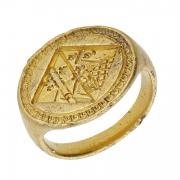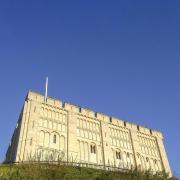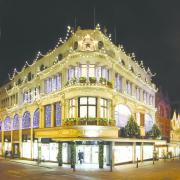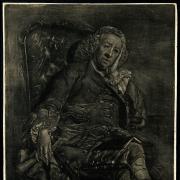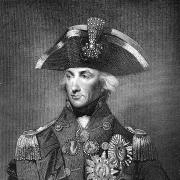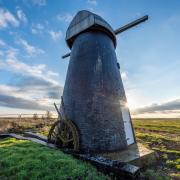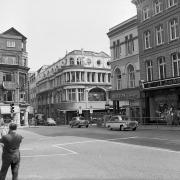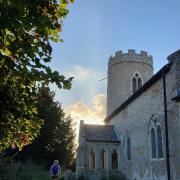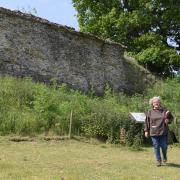Chris Armstrong looks at the remarkable career of Norwich City striker Terry Bly
Saturday, January 3, 1959 was a day I shall always remember. It was the occasion of my first visit to Carrow Road, where Norwich were playing Southend United in the newly re-formed Third Division of the Football League.
My brother and I came in on the special football bus from Holt. During the game these buses were always parked back on to the very edge of the river. One of the additional entertainments, after the game, was to listen for the occasional splash as supporters who had been ‘caught short’ went behind the bus to relieve themselves in relative privacy, forgetting, in the dark, where they were parked.
There were nearly 20,000 at the game and Norwich won 4-0, all the goals coming before half-time. But it wasn’t this rare and heart-warming success (Norwich were, if my memory serves me right only 16th in the league at the time) that so enthused the crowd, but the fact that being at the game offered an opportunity to buy a ticket for the following week.

On January 10 City were to host mighty Manchester United in the third round of the FA Cup. The ‘Busby Babes’, despite the tragedy of the aeroplane crash at Munich which took the lives of so many, could still field a team whose names read like a Who’s Who of football – Charlton, Scanlon, Violett, McGuiness, Foulkes, Gregg - we were still in the era when footballers had pronounceable names - enough to put the wind up much larger clubs than Norwich.
Matt Busby paid City the compliment of taking them seriously – in December he had come to watch the 2nd Round replay against Swindon Town, and left with what he must have felt was a fair picture of our side.
He would have been right. Ten members of the team he saw were to play against United in January turned out for Norwich that day, but one player missed the game through injury, and that player was to destroy United’s cup ambitions with an astonishing performance.

Terry Bly, a Fincham-born boy who, after a trial had been rejected by Norwich, had, by his prolific goal scoring in non-League football for Bury Town persuaded the Canaries to give him another chance. His first season (1956/57) yielded just two goals from nine appearances, and Norwich had a run of 25 consecutive league matches without a win – plus ça change.
In the following season he didn’t play at all because of recurring injury problems leading to cartilage surgery, so when he took the field against Manchester United, he was virtually unknown. By the end of the game his name was being pencilled into every journalist’s notebook.
The edition of the Pink ‘Un that evening, with an unerring eye for the dreadful pun, ran a banner headline BLY, BLY BABES. For, on a snow-covered pitch, Norwich had, as the Eastern Daily Press reported, ‘thrashed’ one of the greatest teams in the land who had at that point completed a run of eight consecutive wins in the First Division.

Bly scored twice, hit the crossbar once and had a header which Gregg could not hold on to - Errol Crossan, the Canadian former ice hockey player on the right wing, scored when the ball bounced back off the keeper. Bly’s first goal would, these days when commentators and reporters seem to feel that statistics are more important than describing the play, be called an ‘assist’ and attributed as such to either of or both Terry ‘The Count’ Allcock who crossed the ball to Bobby Brennan who squeezed it through for Bly to strike it past Gregg.
His final goal, just before the close was a magnificent strike, which the press reported had even goalkeeper Gregg applauding. The ever-modest Bly said that he took the shot with his eyes closed!
In those days the traditional forward line of five players was the Norwich norm. Apart from Crossan there was the mercurial Jimmy Hill (not the one with a chin and a beard), Terry Allcock – perhaps as good a wicket-keeper as he was a footballer, Bly himself and the wonderful Bobby Brennan - probably the most skilful member of the team.

Brennan, a Northern Irish international, played at centre forward for his country, but on the left wing for Norwich. Brennan was Norwich’s ‘Stanley Matthews’, with fabulous ball control and a shimmy which left full backs stranded time and again.
Earlier in his career he was described as ‘speedy’ but by this time he was approaching his mid 30’s and the speed was not so evident, especially in the second half. I formed a theory about this half-time change of pace.
At the time charities didn’t collect in boxes outside the ground. Instead, at half-time four men would each take a corner of a tarpaulin and carry it round the ground for spectators to lob coins into for whichever charity was being supported. Probably more coins hit the people at the front of the stand than went in the tarpaulin, and a number were certainly aimed at the police who patrolled the touchline.
Some missed altogether and lay on the side of the pitch. Footballers were not paid extravagantly then, and we used to joke that Brennan, patrolling the left wing, was always on the lookout for pennies which had missed the tarpaulin and could be stuffed into the pockets of his shorts, and that their weight slowed him down!

But for all the wiles of Hill and Brennan and the speed and crosses of Allcock and Crossan, it was definitely Terry Bly’s day – he stole the show. And that was just the start. He scored five more FA Cup goals before City were eventually knocked out in the semi-finals, by Luton.
Replays were necessary against Tottenham in the fifth round, Sheffield Utd in the sixth and Luton in the semi-final. These contributed to a crush of fixtures which resulted in Norwich playing a game on average every 2½ days by April.
A contemporary cartoon in the national press, which showed a couple out shopping with the man who held the shopping basket, dressed in football gear had a caption which explained that he played for Norwich and had no time to change! And while their minds were primarily on the Cup Norwich were climbing the league as well – they eventually finished fourth.

Terry Bly’s contribution was astonishing – in 23 league games he scored 22 times and ended the season with a combined league and cup total of 29 goals from just 32 matches. He started the following season in similar form, scoring three goals in the first five games but injuries again took their toll and, in what was a successful season for the club who clinched promotion to the Second Division he was able to play just 15 times altogether.
His career at Norwich ended there. Whether because of concern about his fitness or questions as to his ability playing at a higher level, he was sold. He joined Peterborough, newly elected to the Football League but two divisions below Norwich, and was soon causing City fans to regret the sale of their star striker.
Peterborough went on to score a huge total of 134 goals in their first League season, and Terry Bly scored 52 of them. Not only did Peterborough win the Fourth Division title, but Bly’s remarkable tally was, and remains today, the highest number of goals scored post war by one player in any league season for any club.
His extraordinary scoring record attracted Jimmy Hill – yes, this time the one with the chin and the beard, who was manager of Coventry City and signed Bly for £12,000 in 1962, ambitious for promotion to the Second Division. Bly obliged, as usual, scoring 25 goals in 32 games, but this wasn’t enough for Hill who sold him on to Notts County for a small profit, to the outrage of some Sky Blue fans. At County he had a disappointing and short career, slipping into non-league action as player-manager of Grantham Town in 1964.

Always a modest man, he accepted his exodus from the League with grace and maintained his enthusiasm – he claimed no great skill – just the knack of scoring goals which endeared him to the fans of his successive clubs. When he finished playing, in 1970, he continued as manager, until 1978, when he was sacked.
Fourteen years as manager of one club is almost as rare an occurrence as 52 goals in a season, and he was certainly popular with the players. When he was sacked, they threatened a walkout and published a bitter open letter about the attitude of the directors.
In retirement Bly opened a sports shop in the town, but died from a heart attack in 2009. Grantham named a street in his honour, and he is remembered with affection too at Carrow Road as a member of Norwich City’s Hall of Fame. Many others will, like me, never forget his second goal against Manchester United.
The saddest part of this story is that we never discovered whether he would have been as effective in the higher leagues so he will never be as famous as other great strikers of the era, such as Jimmy Greaves. Their paths did cross once, in 1976. Greaves ended his playing career at Chelmsford, who in October 1976 defeated Grantham 4-2, Greaves scoring twice.
Sadly, by then Bly, about five years older than Greaves, was no longer playing. Had he been on the field of play rather than in his managerial dugout, heaven knows what the final score might have been.





